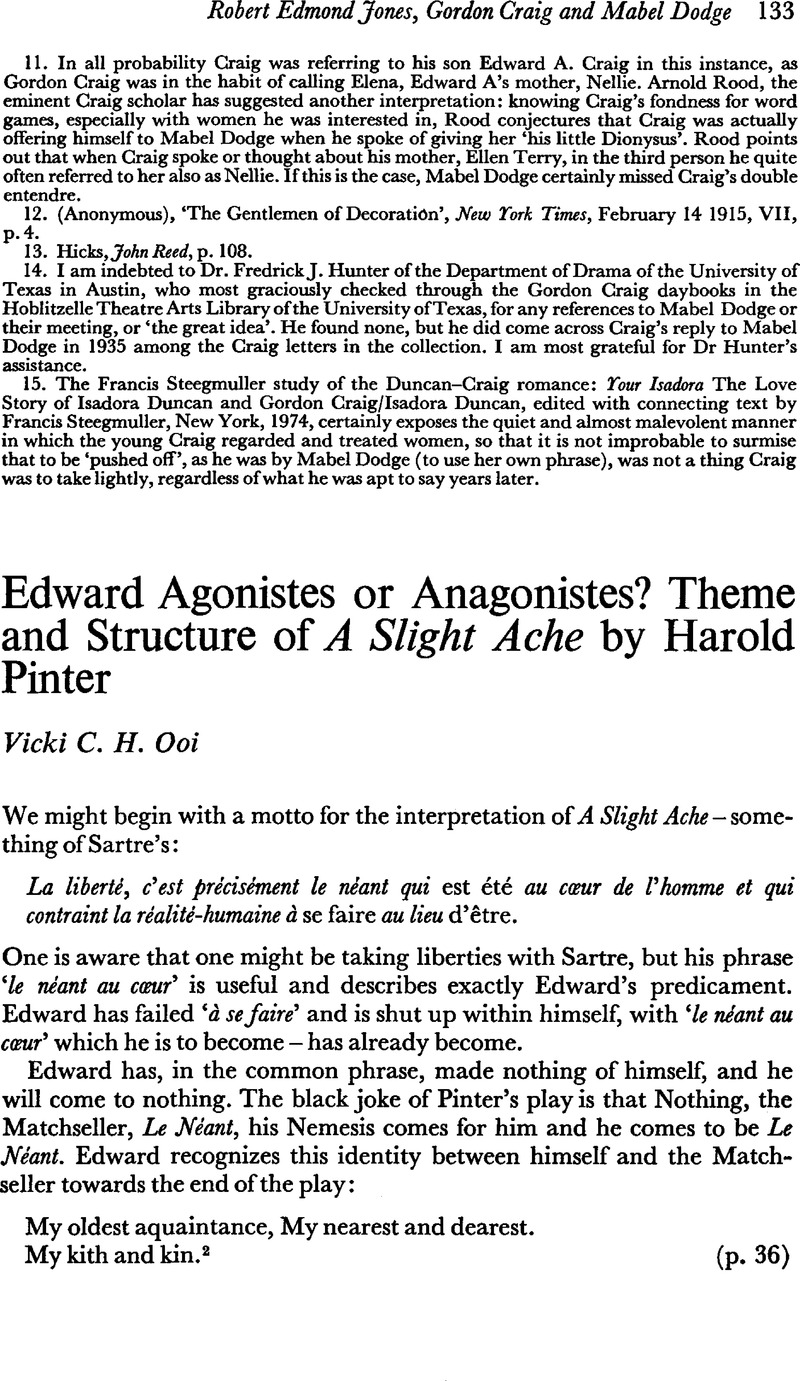Published online by Cambridge University Press: 23 January 2009

1. L'être et le néant, Paris, Gallimard 1948, p. 516.Google Scholar
2. Page references are to the Methuen edition, London 1961; for convenience they have been put straight after quotations from the play. All other quotations are referred to in these notes Dots in quotations are Pinter's, omissions have been marked by a series of dashes.
3. Partisan Review, Vol. 16, No. 1949: reprinted in the Dehumanization of Art & Other Writings, N.Y. Doubleday, Anchor Books, 1956. Originally published in Die Neve Rundshcau, Berlin, 1932.
4. On Ortega's kinship with the Existenz Philosophie of Heidegger see his own footnote pp. 5–6 of the Dehumanization of Art.
5. Op. cit., pp. 132–3. Ortega speaks of each man as having one possible destiny. Perhaps this view is open to controversy and the discussion of it would go beyond this paper. However, there are 3 possibilities: a man may have several possible authentic destinies or one; and he may achieve one of several, the one only or none. Edward, in A Slight Ache, achieves none.
6. ‘In the neurotic character structure there is always shaky disturbed self-esteem, and the shaky disturbed feelings of security. These must be … supported … if the individual is not to fall into that black pit in which he feels absolutely worthless, rejected overcome & helpless. This is the ultimate psychological danger … the possible cartastophic breakdown (absolute worthlessness, absolute rejection) which the (feared) situation may bring …’ from Principles of Abnormal Psychology by Maslow, A. & Mittelmann, B., N.Y.: Harper's, 1941, p. 59, 9. V.Google Scholar
7. ‘In Search of Goethe from Within’, op. cit., p. 153.
8. ibid.
9. ibid., p. 133.
10. Samson Agonistes, 1.155.
11. ibid., 1.1387.
12. op. cit., pp. 150–1.
13. Samson Agonistes, lines 710–31.
14. Modern Drama, XI, 12 1968, pp. 33–4.Google Scholar
15. Eleanor in The Years by Virginia Woolf.
16. Louis in The Waves by Virginia Woolf.
17. Heidegger, , ‘What is Metaphysics?’, Existence and Being, Chicago 1949, pp. 347–9.Google Scholar